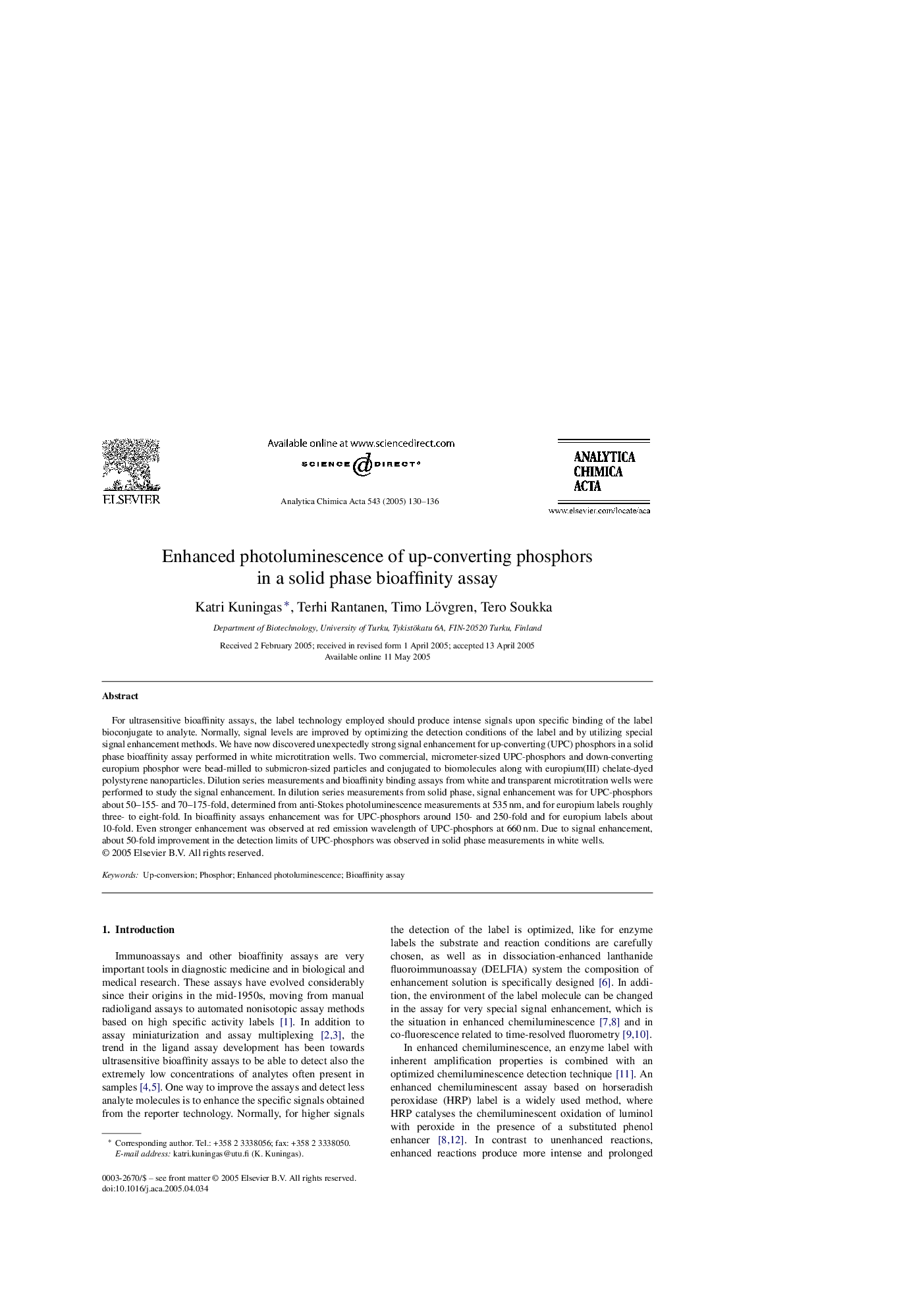| Article ID | Journal | Published Year | Pages | File Type |
|---|---|---|---|---|
| 9743574 | Analytica Chimica Acta | 2005 | 7 Pages |
Abstract
For ultrasensitive bioaffinity assays, the label technology employed should produce intense signals upon specific binding of the label bioconjugate to analyte. Normally, signal levels are improved by optimizing the detection conditions of the label and by utilizing special signal enhancement methods. We have now discovered unexpectedly strong signal enhancement for up-converting (UPC) phosphors in a solid phase bioaffinity assay performed in white microtitration wells. Two commercial, micrometer-sized UPC-phosphors and down-converting europium phosphor were bead-milled to submicron-sized particles and conjugated to biomolecules along with europium(III) chelate-dyed polystyrene nanoparticles. Dilution series measurements and bioaffinity binding assays from white and transparent microtitration wells were performed to study the signal enhancement. In dilution series measurements from solid phase, signal enhancement was for UPC-phosphors about 50-155- and 70-175-fold, determined from anti-Stokes photoluminescence measurements at 535Â nm, and for europium labels roughly three- to eight-fold. In bioaffinity assays enhancement was for UPC-phosphors around 150- and 250-fold and for europium labels about 10-fold. Even stronger enhancement was observed at red emission wavelength of UPC-phosphors at 660Â nm. Due to signal enhancement, about 50-fold improvement in the detection limits of UPC-phosphors was observed in solid phase measurements in white wells.
Related Topics
Physical Sciences and Engineering
Chemistry
Analytical Chemistry
Authors
Katri Kuningas, Terhi Rantanen, Timo Lövgren, Tero Soukka,
